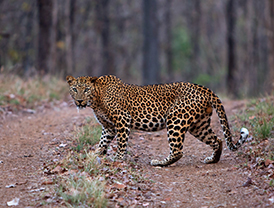
Based in Mumbai, Ravalnath Joshi is an avid nature and wildlife photographer who takes great interest in studying the habitat and characteristics of his subjects.
As told to Tanika Godbole
I have been a Mumbaikar all my life. Since childhood, I was fascinated with the city’s nature and wildlife. Birds and mammals (especially predators), since then, have been my areas of interest.

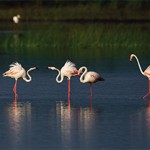
I bought my first Canon D-SLR in the summer of 2009 and subsequently got into wildlife photography after buying a telephoto zoom lens of 100-400mm. Before that, I had bought 70-300mm and 150-500mm lenses, which felt like a waste of money. Now, I firmly believe in buying quality products, even if I need to wait for a while to be able to afford it. I strongly believe that today, both Canon and Nikon have got quality lenses at every price point with varied benchmarks. When I was a beginner, I started reading Smart Photography, and found a mentor in it.
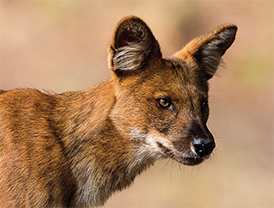
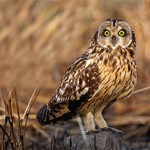
Wildlife photography for me is all about passion and planning. Before arriving at any destination, it is very important to know about the habitat, the flora and fauna in that region, the weather conditions, and more importantly, accessibility to the core areas. As a reference point I always check out images that other photographers have taken there. I prefer taking a guide along, especially in remote areas.
I use a full-frame Canon 6D camera with a Canon 500mm f/4 lens. I also carry a Canon 1.4x teleconverter to boost the focal length for birds. But I also carry a spare camera body with a Canon 70-200mm f/2.8 lens (for extreme low light conditions). Other than the camera body and the lenses, I always carry a tripod for whatever lens I use. When I am shooting from my car window, I use a bean bag for stability and sharpness.
Light conditions in Indian wildlife are always challenging. Moreover, the activity happens during early morning or late evening hours. So even if you have a super telephoto lens, it will not always be possible to get sharp portraits due to poor light conditions. In such cases it is always better to sacrifice the focal length and get good images of the species with the habitat.
Recently, I had been to Nagzira Tiger Reserve near Nagpur, where I photographed a leopard for the first time in the wild, after a wait of 4 years. It was 6:45 pm and the light was at its lowest intensity. We were fortunate to get that extra half hour inside the jungle, after 6:30 pm closing time. The leopard was pleasantly walking on the mud track after quenching its thirst at a nearby waterhole. I could not miss this first opportunity of shooting a leopard in the wild. But I knew the maximum aperture of f/4 on my 500mm lens will definitely not help me get a good sharp image. So I immediately shifted to the Canon 70-200mm lens. The aperture of f/2.8 got me the most memorable shot of my life time.
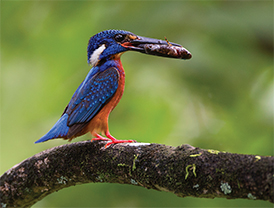
Wildlife photography is all about pre-composition. After understanding the light and weather conditions, one should adjust the white balance as it plays a crucial role in any kind of photography. While shooting Raw, even Auto WB works. Otherwise in bright sunlight I set my WB at 4800 K and in cloudy conditions 5800 K. Optimal shutter speed is very important. It has to be 1/focal length of the lens. Accordingly, the ISO has to be set to avoid loss of sharpness.
One of the most important factors in wildlife photography is the depth of field. Especially when the subject is not perpendicular to our camera or is walking head on. I usually Golden Jackal prefer using two stops above the maximum aperture as it helps me to get 80% of the subject in focus.
A good photographer should know the animals’ behavioural pattern and any other noteworthy traits. Lastly, I always prefer to maintain a safe distance from the species. This way you prevent disturbing the species, and also make the bird or animal feel comfortable.

